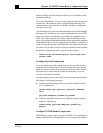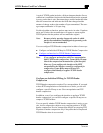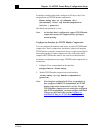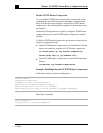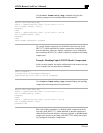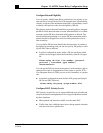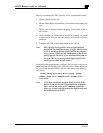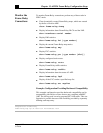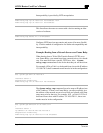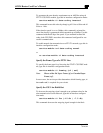
Chapter 13: AI2524 Frame Relay Configuration Steps
August 1997 Page 13-45
2524UM
Configure Discard Eligibility
You can specify which Frame Relay packets have low priority or low
time sensitivity and will be the first to be dropped when a Frame Relay
switch is congested. The mechanism that allows a Frame Relay switch
to identify such packets is the discard eligibility (DE) bit.
This feature requires that the Frame Relay network be able to interpret
the DE bit. Some networks take no action when the DE bit is set. Other
networks use the DE bit to determine which packets to discard. The
most desirable interpretation is to use the DE bit to determine which
packets should be dropped first and also which packets have lower
time sensitivity.
You can define DE lists that identify the characteristics of packets to
be eligible for discarding, and you can also specify DE groups to iden-
tify the DLCI that is affected.
z
In global configuration mode, define a DE list specifying which
packets can be dropped when the Frame Relay switch is congest-
ed:
frame-relay de-list
list-number
{protocol
protocol
| interface
type number
}
characteristic
You can specify DE lists based on the protocol or the interface, and on
characteristics such as fragmentation of the packet, a specific TCP o
User Datagram Protocol (UDP) port, an access list number, or a packet
size.
z
In interface configuration mode, define a DE group specifying th
DE list and DLCI affected:
frame-relay de-group
group-number dlci
Configure DLCI Priority Levels
DLCI priority levels allow you to separate different types of traffic and
can provide a traffic management tool for congestion problems caused
by these situations:
z
Mixing batch and interactive traffic over the same DLC
z
Traffic from sites with high-speed access being queued at destina-
tion sites with lower speed access





